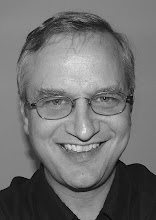Why does my blog URL contain the number "30?"
Old-time journalists know.
From the days of "hot type," the number "30" at the end of a typewritten story indicated "the end."
Wednesday, February 20, 2008
The Future of Academic Journalism
I've asked the faculty. I've asked the department's professional advisers. Now I'm asking you.
What new directions should college journalism programs take in the next 10 years?
On one side of the discussion are those who are convinced that changes in the technology of communication will fundamentally alter the way news is gathered and distributed. They point to the use of blogs, discussion boards, cell phones, video cameras, etc., to argue that more people will, and must, become integrated into the process of creating news. And they certainly have a point. Many stories today would not exist, or would be less complete, if not for citizens taking on the role of watchdog journalists. But to what extent should journalism schools teach students to integrate such practices into what they do? Do the uses of these new communication devices fundamentally change the way "professional" journalists are taught how to recognize and shape news stories for a mass audience? People in this camp tend to favor a curriculum that is more broad than deep, exposing journalism students to a variety of ways to shape a story for the eye and ear. Many suggest every journalism student should be highly competent with a digital still camera, digital video camera, Web-authoring softwares such as DreamWeaver, design software such as InDesign, etc. Products of such journalism programs would be expected to write it, shoot it, edit it, get it on the air, on the Web, in the paper, etc.
On the other side are those who say journalism programs shouldn't worry so much about the changing technology of the day as much as they should focus on the skills necessary to tell a good story, and how the new technology augments this process. These kinds of people favor a curriculum that has a broad slice of liberal arts, but a deeper emphasis in one particular area of journalism. To tell a story really well, they suggest, requires a thorough grounding in one particular medium, such as print. They believe it is probably impossible to be a great journalist across all media; better, they say, to demonstrate excellence in one area and competence in others. The product of this kind of program would be slanted toward employment in a more traditional slice of the journalism industry, but would adapt to changes as they come.
We are grappling now with deciding how much to adjust the curriculum in response to these new communication methods and media.
My own bias? A confession. I am a "late adopter." I'm the last person who bought a cell phone, a personal computer, an iPod. To some degree I am a traditionalist. But I am not a dinosaur.
..Mike Sweeney, journalism professor, Utah State University
What new directions should college journalism programs take in the next 10 years?
On one side of the discussion are those who are convinced that changes in the technology of communication will fundamentally alter the way news is gathered and distributed. They point to the use of blogs, discussion boards, cell phones, video cameras, etc., to argue that more people will, and must, become integrated into the process of creating news. And they certainly have a point. Many stories today would not exist, or would be less complete, if not for citizens taking on the role of watchdog journalists. But to what extent should journalism schools teach students to integrate such practices into what they do? Do the uses of these new communication devices fundamentally change the way "professional" journalists are taught how to recognize and shape news stories for a mass audience? People in this camp tend to favor a curriculum that is more broad than deep, exposing journalism students to a variety of ways to shape a story for the eye and ear. Many suggest every journalism student should be highly competent with a digital still camera, digital video camera, Web-authoring softwares such as DreamWeaver, design software such as InDesign, etc. Products of such journalism programs would be expected to write it, shoot it, edit it, get it on the air, on the Web, in the paper, etc.
On the other side are those who say journalism programs shouldn't worry so much about the changing technology of the day as much as they should focus on the skills necessary to tell a good story, and how the new technology augments this process. These kinds of people favor a curriculum that has a broad slice of liberal arts, but a deeper emphasis in one particular area of journalism. To tell a story really well, they suggest, requires a thorough grounding in one particular medium, such as print. They believe it is probably impossible to be a great journalist across all media; better, they say, to demonstrate excellence in one area and competence in others. The product of this kind of program would be slanted toward employment in a more traditional slice of the journalism industry, but would adapt to changes as they come.
We are grappling now with deciding how much to adjust the curriculum in response to these new communication methods and media.
My own bias? A confession. I am a "late adopter." I'm the last person who bought a cell phone, a personal computer, an iPod. To some degree I am a traditionalist. But I am not a dinosaur.
..Mike Sweeney, journalism professor, Utah State University
Subscribe to:
Posts (Atom)
